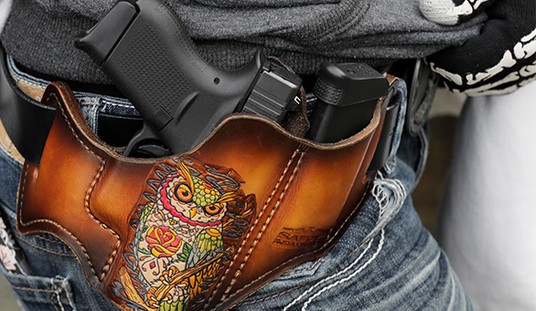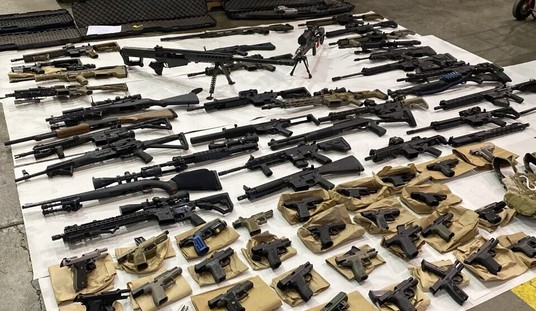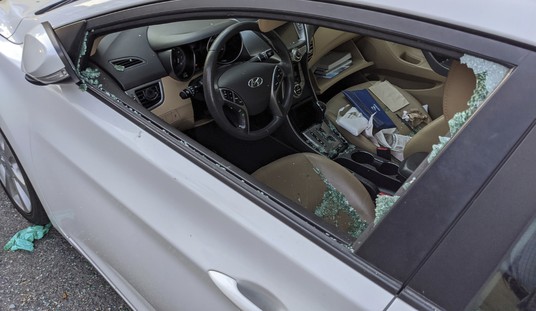Paul M. Barrett never ceases to amuse me as a writer.
He’s the assistant managing editor and a senior writer at Bloomberg Businessweek who write about firearms constantly, and yet, quite obviously finds them distasteful. Barrett dances around the fringes of the gun culture, but isn’t a part of if and doesn’t fully understand it. As a result, everything he writes on the subject carries with it a lack of credibility… it’s like taking sex advice from a monk.
He’s now tackled the competition to replace the military’s aging handgun, the 9mm Beretta M9, and he thinks he’s got it all figured out.
Glock vs. Smith & Wesson: A Shootout for the Pentagon’s New Pistol Contract
For gun manufacturers, no customer rivals the Pentagon for prestige and revenue potential. That’s why, after years of anticipation, firearm makers are mobilizing for the U.S. Army’s imminent competition to replace the Beretta M9 pistol, the American soldier’s standard sidearm since 1985.
The procurement process for several hundred thousand new pistols formally begins in January and is expected to last about two years. Based on more than 15 years of reporting on the gun business, I’d identify the early favorites as a much-improved Smith & Wesson (SWHC), which enjoys a made-in-the-USA marketing edge, and the formidable Glock of Austria.
Unfortunately, Barrett—like most pundits opining on the MHS contract—hasn’t apparently spent any time reading what the Army says that it wants from the MHS program.
We’ll point to the Wikipedia page for the Modular Handgun System (MHS) as a good starting point for looking at the requirements for the pistol. While Wikipedia is regularly (and deservedly) panned for the quality of their entries in general, the MHS page is riveting for it’s style and level of detail that suggests someone within the MHS program itself is maintaining the Wikipedia page.
Let’s look specifically at the all-important “Requirements” section of the page, and see how Barrett’s supposition holds up.
The U.S. Army initially required the MHS to be more effective, accurate, and reliable than the M9 pistol. The MHS requirement called for a non-caliber specific weapon with modular features to allow for the adaption of different fire control devices, pistol grips, and alternate magazine options. The weapon will fit various hand sizes and will mount targeting enablers using Picatinny rails. The new weapon will incorporate detection avoidance by having a non-reflective neutral color and will be operable with sound and flash suppressor kit in place.[3]
In January 2013, the Army released a Request for Information (RFI) to assess available handgun technologies and U.S. small arms industrial production capacity for the Modular Handgun System. The announcement seeks information “on potential improvements in handgun performance in the areas of accuracy and dispersion out to 50 meters, terminal performance, modularity, reliability, and durability in all environments.” The handgun should have a 90 percent or more chance of hitting in a 4 inch circle out to 50 meters consistently throughout the weapon’s lifetime. Ergonomic design should minimize recoil energies and control shot dispersion. Features include, but are not limited to, compatibility with accessory items to include tactical lights, lasers, and sound suppressors. Full ambidextrous controls are required and there is interest in ergonomic designs that can be controlled by female shooters. There is no specific caliber, but terminal ballistics at 50 meters through 14 inches of ballistics gel will assess lethality compared to M882 9mm rounds. Specific interest is given to pistols that can accommodate higher chamber pressures over 20 percent greater than SAAMI spec for the cartridge without degradation of reliability. The RFI calls for 2,000 mean rounds between stoppages, 10,000 mean rounds between failures, and a 35,000 round service life. Manufacturers are asked to provide production capacity estimates on minimum and maximum monthly rates, as well as the lead times to achieve those rates. Estimated pricing is requested for quantities of 250,000 to 550,000 handguns.[4]
Let’s unpack that first paragraph describing the physical characteristics of the desired weapon system.
- non-caliber specific
- modularity that allows for different operating systems, grips, and alternate magazines
- must fit various hand sizes
- Picatinny rails
- suppressor-capable
The devil, as always, is in the details.
[article continues on next page]

Non-Caliber specific
The MHS contract is truly a system-wide reboot, with the Army looking to replace not just the handgun itself, but is considering different calibers and supporting accessories. That said, the 9mm is thought to be dead-on arrival thanks to dismal combat performance with the military’s general issue FMJ rounds. This is a bit sad, as advances in civilian hollowpoint ammunition technology have progressed to the point that 9mm ammunition performance in live targets is indistinguishable from that of .40 S&W, .357 SIG, or .45ACP, helping to create a trend of law enforcement agencies moving back from heavier-recoiling, lower-capacity pistols to “wonder nines” that are now truly starting to live up to their names a generation after the term was coined.
The .40S&W and its child, the .357 SIG, aren’t considered to be viable because the beating they put on the slides and frames of handguns. Law enforcement departments nationwide are ditching these calibers for this specific reason. The Army, which demands a much longer service life, will not choose these cartridges for general issue.
The smart money among the companies vying for the contract is that the MHS is looking to return to the .45 ACP, though whether the military is going to return to the old 230-grain ball round, the hotter 185-grain pill, or something else isn’t something that we can predict.
That said, any design submitted must be able to handle multiple calibers. That’s going to be difficult for those companies that have different frames from different calibers.
Modularity
Modularity is one of “must haves” that will kill many contenders for the MHS contract, and is a major point of contention, as the army has been somewhat vague in defining it.
For example, a SIG P320 variant that is competing for the contract is truly modular, with the ability to swap calibers, magazines and frame sizes from a full-sized duty pistol to a carry gun.
Neither the Glock nor the Smith & Wesson M&P have that capability.
All of these guns are likewise striker-fired, but don’t have “different fire control devices,” which we interpret as the capability to switch between a strike-fired design for general issue and a single-action or double-action-only (DAO) fire control devices if the Army decides that it wants to upgrade or change a number of pistols for different units/MOSs/needs. For example, a plainclothes CID (criminal intelligence) unit might want a pistol with a shorter-length frame and a DAO trigger group for concealed carry in civilian clothes, while general service pistol might be full-sized using a striker, and some of the more elite units might desire a full-sized single-action variant.
To the best of our knowledge, the Detonics Defense STX (striker-fired)/MTX (SAO) is the only MHS contender presently offered with more than one fire control system.
The “modularlity” of COTS (commerical-off-the-shelf) Glocks and M&Ps are limited to changing out the backstraps, and for that reason alone, the designs would seem to be dead-on-arrival unless each company has a behind-the-scenes pistol radically different that anything anyone has ever seen.

Must fit various hand sizes
One of the biggest complaints against the M9 is that it has a huge grip and a longer trigger reach. The design simply does not work for most women or men of smaller stature. The MHS pistol is required to fit a much larger range of hand sizes. While I’m not seeing anything in public documents saying precisely what the range will be, smart money says that the Army wants a pistol that will fit nearly any soldier’s hand, male or female, large or small. They’re going to want a pistol with a grip that will fit the 5th to 95th percentile of users, or better.
Once again, the Glock and M&P seems come up short against this requirement with their COTS pistols, and I’m not sure if the SIG P320 makes it (though it certainly seems to be designed with a wider range of hand sizes in mind).
Picatinny rails
Almost an add-on, and not worth discussing.
Suppressor-Capable
Again, not a significant pinch-point for any of the contenders.
* * *
While Smith & Wesson and Glock certainly want the MHS contract, neither company has a present COTS offering that seems to come close to meeting the program’s requirements.
Barrett’s argument for Glock and Smith & Wesson seems to ignore both the obvious other “big brand” contender in the Sig P320 MHS variant that actually comes far closer to hitting military requirements than either the Glock or the M&P, and the upstart Detonics Defense MTX/STX that we predicted back in June was the obvious front-runner based on the requirements of the contract, if not the size of the company.
Maybe it would behoove Barrett and other reporters covering the contract to actually look at the requirements and specifications that the Army demands of their next generation pistol, instead of absurdly claiming that the competition comes down to two competitors who haven’t even announced pistols that are viable contenders.









Join the conversation as a VIP Member